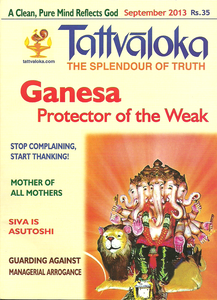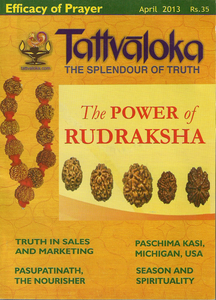6 Moksha
6-1 Preparation
6-2 Jnana, Jnani, and Jnana-Phala
6-2-3 Six definitions 8(1 to 4) The last two verses, 29 and 30 of the 7th chapter have introduced some terms without explaining them. 8th chapter begins with Arjuna’s question to know these terms, namely, Brahm, Adhyatam, Karma, Adhibhutam, Adhidaivam, and Adhiyagna. Brahm is the supreme imperishable entity. It is a pithy answer because, in the 7th chapter, Para- prakriti has been explained in detail as the imperishable entity, namely, consciousness. It pervades the creation. As such, it is within the body also. The embodied consciousness is Adhytama. Brahm is consciousness from a macro angle, Adhyatma is the same consciousness from a micro angle.
Tag Archives: jivatma
upadesha sAhasrI – Part 22
 Part 22 of the serialization of the presentation (compiled by R. B. Athreya from the lectures given by Swami Paramarthananda) of upadesha sAhasrI. This is the prakaraNa grantha which is agreed by most experts to have been written by Shankara himself and is an elaborate unfoldment of the essence of Advaita. Note that this is the concluding part of the series.
Part 22 of the serialization of the presentation (compiled by R. B. Athreya from the lectures given by Swami Paramarthananda) of upadesha sAhasrI. This is the prakaraNa grantha which is agreed by most experts to have been written by Shankara himself and is an elaborate unfoldment of the essence of Advaita. Note that this is the concluding part of the series.
Subscribers to Advaita Vision are also offered special rates on the journal and on books published by Tattvaloka. See the full introduction
upadeSha sAhasrI – part 17
Part 17 of the serialization of the presentation (compiled by R. B. Athreya from the lectures given by Swami Paramarthananda) of upadesha sAhasrI. This is the prakaraNa grantha which is agreed by most experts to have been written by Shankara himself and is an elaborate unfoldment of the essence of Advaita.
Subscribers to Advaita Vision are also offered special rates on the journal and on books published by Tattvaloka. See the full introduction

